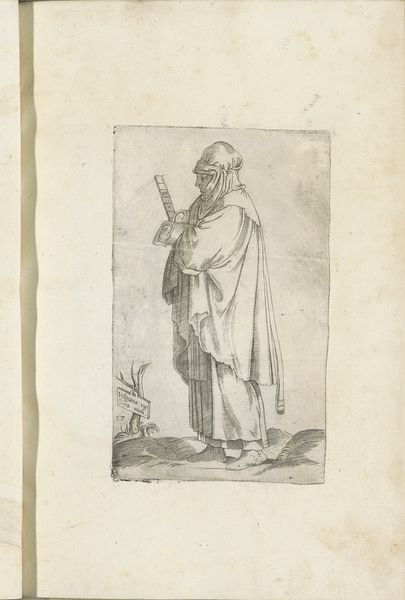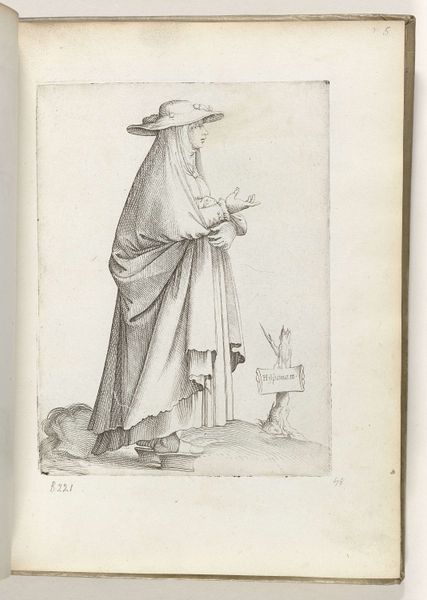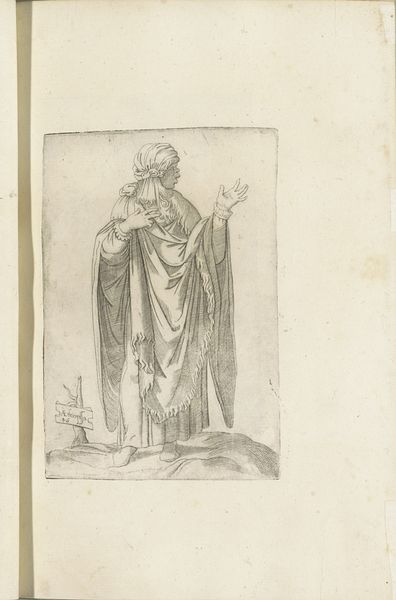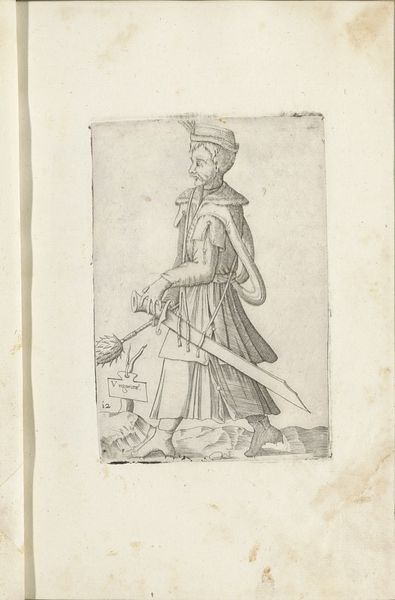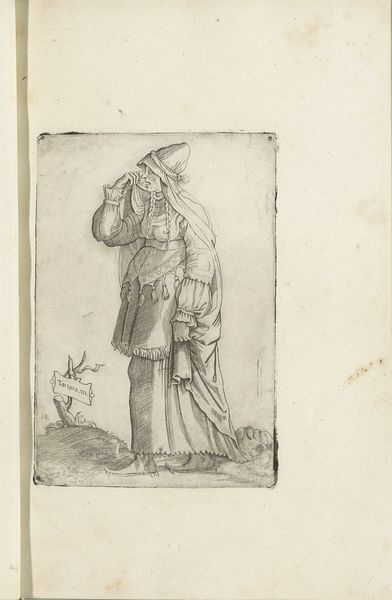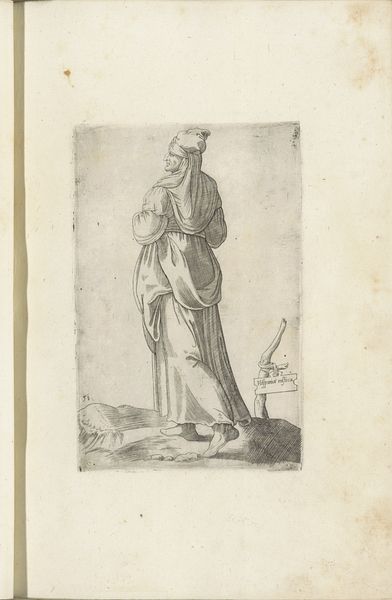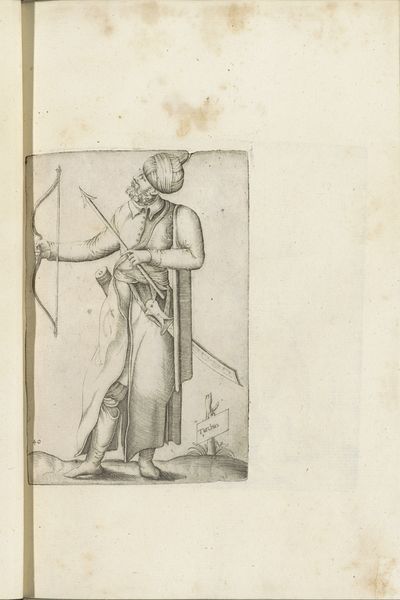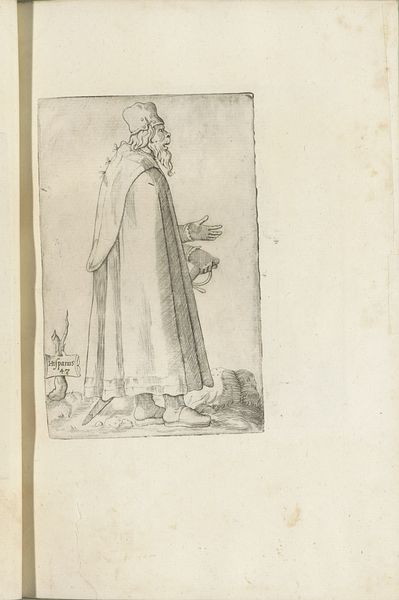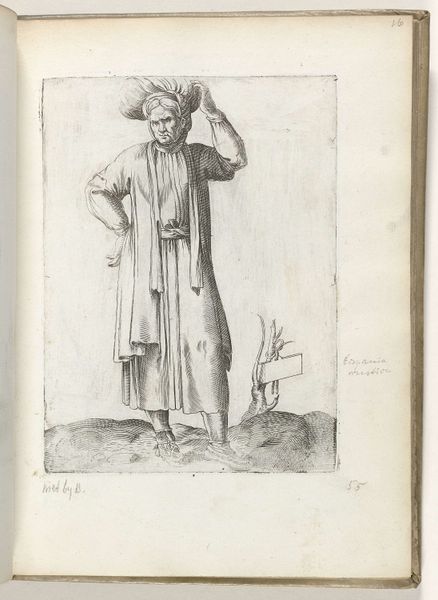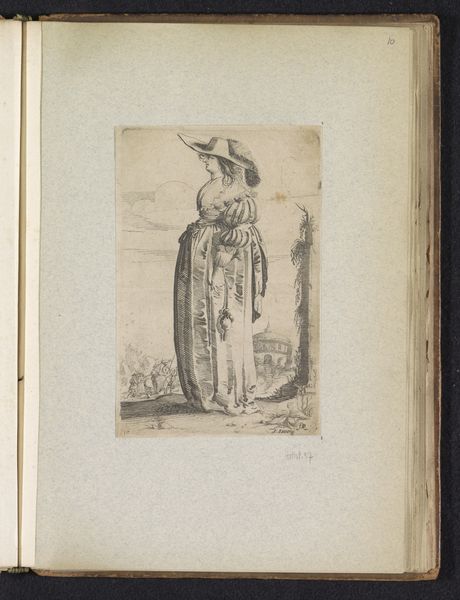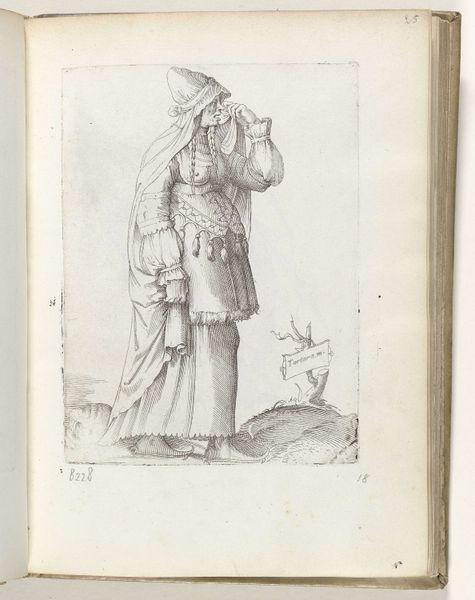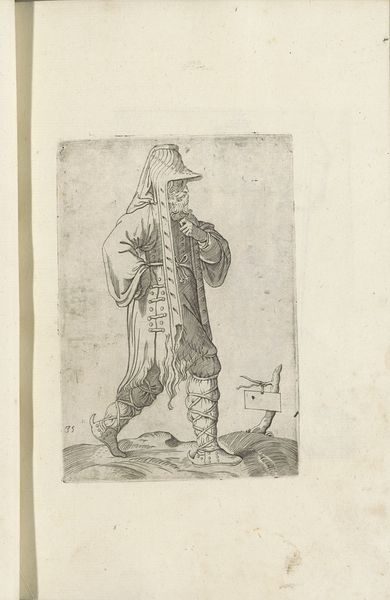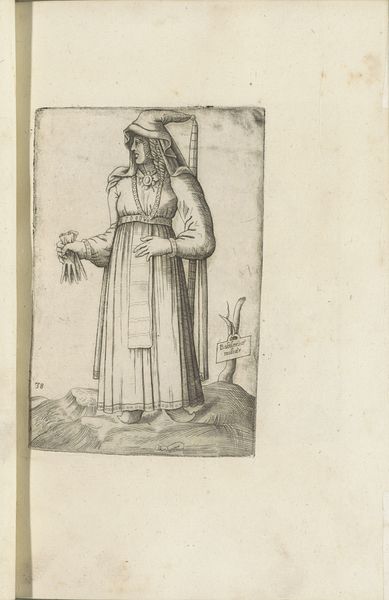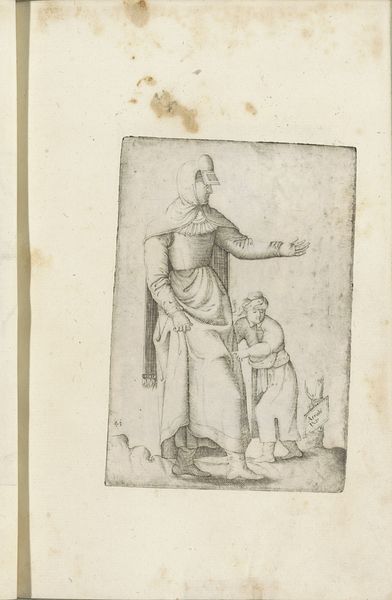
drawing, print, engraving
#
portrait
#
drawing
# print
#
landscape
#
mannerism
#
figuration
#
history-painting
#
engraving
Dimensions: height 265 mm, width 195 mm, height 150 mm, width 105 mm
Copyright: Rijks Museum: Open Domain
Curator: This engraving by Ferando Bertelli, titled "Spaanse vrouw, lopend op trippen," created around 1569, offers a glimpse into 16th-century fashion and culture. Editor: There's a subdued quality to the line work that sets an introspective mood, doesn't it? It captures a sense of reserved elegance. Curator: The piece exemplifies Mannerist aesthetics with its elongated figure and refined detail, showcasing a Spanish woman elevated by pattens. I am immediately drawn to how her form seems almost sculptural despite the flatness inherent in printmaking. Note the textures of the clothing created with such minimal means! Editor: Indeed. Thinking historically, those "trippen" or pattens, weren't mere fashion statements; they reveal details about urban life. The print provides insights into status, identity, class, and movement. Curator: The subtle contrapposto stance and the draping of her garment generate movement and volume despite the static medium, playing with light and shadow across planes that barely exist! This emphasis contributes to visual interest. It draws one in despite the monochrome nature of the work. Editor: These images helped establish stereotypes of peoples from other nations. And such images also affected ideas on fashion and commerce across different nations. You can find depictions of costume that start around the late 1500s onwards; there’s something really engaging here, but equally problematic if viewed from today’s standpoint. Curator: Her gesture and the ambiguous background underscore the print’s symbolic dimension. This open-ended narrative invites interpretation beyond superficial representation of dress. Editor: The socio-political context of printmaking here, specifically engravings like this being mass-produced and disseminated to show the foreign fashions, highlights the globalized interactions occurring as new global trade routes were emerging during the period. We begin to realize prints acted as an essential source. It would have made the fashions far and wide known among different people who were interested in these visuals. Curator: Precisely, it is how such works shape visual perceptions. Viewing “Spaanse vrouw, lopend op trippen" has revealed the nuanced dimensions that lie at the heart of these types of figural representations. Editor: I am pleased to observe such pieces allow me to consider larger historical and cultural phenomena at play, such as early forms of globalization.
Comments
No comments
Be the first to comment and join the conversation on the ultimate creative platform.
